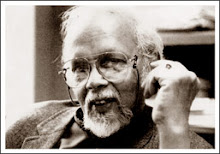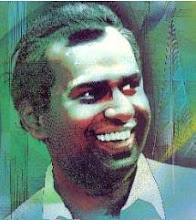
Kohomba Kankariya
by L. B. Senaratne
Kohomba Kankariya was first enacted in Sri Lanka during 1415 and 1468, at Jayawardenapura, Kotte. The ritual of God Kohomba, which ought to have been performed at Gannoruwa Ranabima (battlefield) between 1707 and 1739, during the reign of Sri Vira Parakrama Narendrasinghe did not take place at that time but was reported to have been held at Hantanne. The reason has not been adduced so far.
Like 'Gam Maduwa' rituals, Kohomba Kankariya ritual is performed to ensure freedom from diseases, invoke blessings and for the people to live in prosperity. The blessings are expected to manifest only in the location that KK is enacted, so that if any others want such blessings, they too are compelled to enact KK in their own areas, thereby ensuring more people would make offerings to please the 'Yakka' (devil) separately for their well-being!
From a different era
According to legend, the origin of this ritual dates back even to King Panduvasudeva's era in which it was born. The king was inflicted with an incurable disease, as a result of his predecessor, King Vijaya not keeping his promise to Princess Kuveni. It was the decision of God Sakra-the King of gods-that he could not be cured except by a person who was born out of a flower-known as the king of a flower. (The name 'Male Rajuroowo' (prince from flowers) in Sinhala is derived form this episode).
How could this be achieved? Sakra suggested that the only way the King of the flower could be brought into the island, was by means of Rahu, the Chief of the Asura tribe. He suggested that Rahu should take the form of a Boar, and should lie in wait in the garden to be seen by the King of the Flower. The King would be drawn to go in search of the Boar. Then next, he could be drawn into the Island.
This advice was followed and after that he came to Sri Lanka, according to the story laid out in the 'Rajavaliya'. (The place where the Boar swan across and landed in Sri Lanka is named "Uratota", as the folklore suggests). The King was then told of the affliction and then he agreed to cure King Panduvasudeva. The King of the flower then took the form of a Brahamin and relieved the affliction of King Panduvasudeva.
But there are other schools of thought; after the arrival of the King of the flower, he brought down four brothers and they assumed various comic guises, at which King Panduvasudeva laughed his wits out and he was said to have been cured.
According to Dr. Ediriweera Sarachandra, who quotes traditional beliefs, after the King of the flower returned to India he committed the people of Sri Lanka to the care of no less than twelve deities - Khomba Yakka, Irugal Bandara, Kande Bandara, Viramunda Yakka, Meleyi Yakka, Vadi Yakka, Kadavara Yakka, Vali Yakka, Kadu guru, Maha Guru, Ambrapati, and Kalu Kumara. All these deities make their appearances in the rituals of Kohomba Kankariya.
A different school of thought suggests that Khomba deity is not the King of the flower, but an altogether new deity created by the King of the flower to invoke the needed atmosphere and the surroundings to cure King Panduvasudeva. The Kohomba Kankariya enacted at the Ranabima Royal College grounds was for the blessings of 12 students, the first batch to be donned with 'Ves' at this school.
Ves is the headdress of a fully fledged Kandyan Dance. In the days gone by, 'Ves' was only donned on very senior dancers. But, of late, many school children have been donned 'Ves' after their period of tutelage under a Guru at the School. The first such donning of 'Ves' in a school was Kingswood College, Kandy. Since then it has been repeated in most schools where Kandyan Dancing is taught. But, of course, the entire process takes place under the close supervision of a senior dancer coming from a traditional Kandyan dancing family.
Kohomba Kankariya is in itself a very interesting exercise, when the students are bathed in pure cold water usually in the ganga(river), and conducted to a temple where many rites are performed by the tutors donning 'Ves'. The whole combination of the head dress is called the 'Ves Tattuwa'. Kohomba Kankariya is also not allowed to perform at anytime throughout the year. It is normally enacted before New Year or during that period.
In Kandy, where Kohomba Kankariya evolved, it takes nearly five years or more to arrange a full Kohomba Kankariya performance - the most difficult point is to scour the professional dancers who know the procedures well and the Kankariya itself.
Cost
In the yesteryear, the Kohomba Kankariya was arranged competitively by Chiefs of a village or those in the village who could afford to arrange this ceremony. The following year, the next village would arrange the Kankariya in a more elaborate way. However, the cost of Kohomba Kankariya is substantial. Even the Ranabima College has to spend around rupees six to seven lakhs, which was borne by the Parents, the Staff and well-wishers of the School. The total number of dancers? A whopping 66!
The Khohomba contains a number of episodes around an incident. Paddy harvested from the village is collected and offered as alms to a person called Cella Guru. But the person who takes the alms after its preparation is stung by a snake. This scenario forms the base and all surrounding sequences are acted in various manner using diverse symbols, accompanied by rhythmic drumming and miming.
The Gurunnanses (performance leaders) depict many of the episodes that are enacted in the Kohomba Kankariya. The performance continues without any break for nearly 12 hours. It commence around six pm in the evening and ends around noon the following day. But, the final preparations for the ceremony commences at least two weeks earlier, such as the adaptation of the place where it is to be held on an auspicious day. The main thrust of this ceremony is that it would not be held in isolation, but with the participation of people, so that they could enjoy the 'play' and also receive the benefit of its blessings.
At the end of the Kohomba Kankariya, the dancer depicting an Elephant, is led away to break into a store. Thereafter, a fire is lit and the pot the dancers carried is dashed on the ground to do away with any malefic influences known as the evil eye. Then the dancers come back to the site of the ritual, where the 'Yahana' or Altar is, and blessings are showered on the organizer of the Kohomba Kankariya. At the same time, a Banana flower is shot with an arrow, as a preventive measure to stop the evil eye being cast on the organiser of the Kankariya. The flower would then be broken along with the bow which was used to shoot the arrow. This ends the Kankariya.




































No comments:
Post a Comment